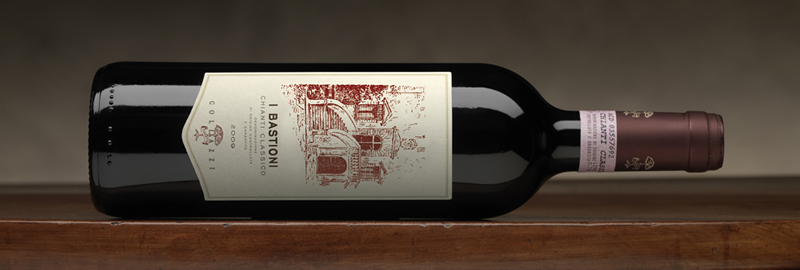I got a Sotheby’s catalogue a couple of weeks ago for high end Italians; the most expensive coming in at $600 per. (There’s room here for a Ruby Heartstealer joke but this is a highbrow column.) If you’re a trophy hunter, Italian wines aren’t worth your time: $600 barely gets you in the door in Burgundy or Bordeaux. On the other hand, if you intend to actually drink the stuff…
[related_content slugs=”dr-booze-takes-on-the-intimidatingly-named-gewurztraminer-wine,dr-booze-switches-to-beer-fruit-beers-that-is,dr-booze-wine-sleuth” description=”More from James Romanow” position=”right”]
Bordeaux and Burgundy are currently priced to sell to Asian billionaires who wish to prove they can drink a couple of thousand dollars without noticing. However once you get past $20, every extra dollar you pay yields proportionately less improvement in the bottle. That anyone pays more than this for a bottle is more a tribute to their earning power than to their palate.
Italian wines are priced to drink which is why I buy them. Although I love many of the wines in the Sotheby’s catalogue, the truth is I can manage just fine on the wines in the under $50 category. What’s more I have no problem in defending the position that such wines from Italy are the equal, and more usually superior to wines of double and treble the cost from Burgundy and Bordeaux.
What I do find really interesting is comparing very well made traditional Italian wines with those wines the same people make to cater to enophiles who believe in the inherent superiority of French varietals. Take for example Ruffino. This winery goes back to the Middle Ages, and owns perhaps the finest vineyard sites in Tuscany. Other than a desire to tap the cash of IGT buyers, Ruffino has no need for an IGT wine: almost all of their vineyards are DOCG.
For years their Ducal reserve has turned in vintage after vintage of fine Chianti (sangiovese) that drinks well from release to about 10 years of age.
All the same, Ruffino is interested in making better wine and introduced an IGT called Modus, for roughly the same money as their Riserva Ducale. The difference is an inclusion of cabernet sauvignon, and merlot to the base sangiovese.
Collazzi, another venerable vintner also possessing a DOCG vineyard where they make I Bastioni Chianti, took a different approach, producing what amounts to a standard Bordelais blend of cabernet sauvignon, merlot, and cabernet franc excluding altogether the traditional Italian varietals.
Let’s start with comparing the two Chianti. This is a fairer test than adding the IGT wines as both Chianti are from the same area, the same grape, and all that can change is the vinification. (Yes, yes, I know: 150 metre change in location can have an effect on a wine. Buy a couple of bottles and we’ll talk.)
The differences are immediately obvious both when I Bastioni is compared to Riserva Ducale and to the Collazzi sister wine Toscana.
I Bastioni is more purple rather than the traditional ochre of Chianti, and the nose is fruitier than the Ducale. Iíd guess they donít filter it quite as much, and perhaps treat the wine more gently after fermentation.
The family sensibility continues with Toscana. This is a tremendously smooth, powerful wine, that will suit both New World and Old World drinkers perfectly. Slightly fruit forward, itís an opulent drink. I have reviewed this wine before, and have no hesitation in recommending it.
Modus presents a different problem, and probably should be reviewed against Col di Sasso and Monte Antico. The addition of the French varietals will either be cause for celebration or cause for despair, depending on whether youíre a Wine Spectator drinker, or a traditionalist.
A huge number of folks will find the more intense fruit of Modus, and the slightly more obvious tannins an improvement. Both Modus and Ducale share a family palate a lovely earthy/chocolate flavour that is tremendously appealing.
Of the two Chianti I tilt towards the Ruffino product. I prefer the lighter texture, the darker palate and slightly astringent finish. For my glass this is close to the optimal match of price and performance. Iíll probably skip by Modus for Collazzi when I seek more opulence, despite – and probably because of – the 30 per cent price hike.
Feel free to award any of them a 91, 90, or even (Gasp!) an 89. These are all great wines, and your choice will say more about your personal palate and mood than the wines.
I Bastioni Chianti Classico, Collazzi, Tuscany, 2007. $24.71 ****
Riserva Ducale Chianti Classico, Ruffino, Tuscany, 2006. $29.49 *****
Ruffino Modus, Sangiovese/Cabernet Sauvignon, Tuscany, 2006. $30.81 *****
Collazzi Toscana, Cabernet Sauvignon/Merlot/Cabernet Franc, Tuscany, 2005. $39.05 *****
–
James Romanow writes about Wine and all things boozy for the Spectator Tribune. Follow him @drbooze.
